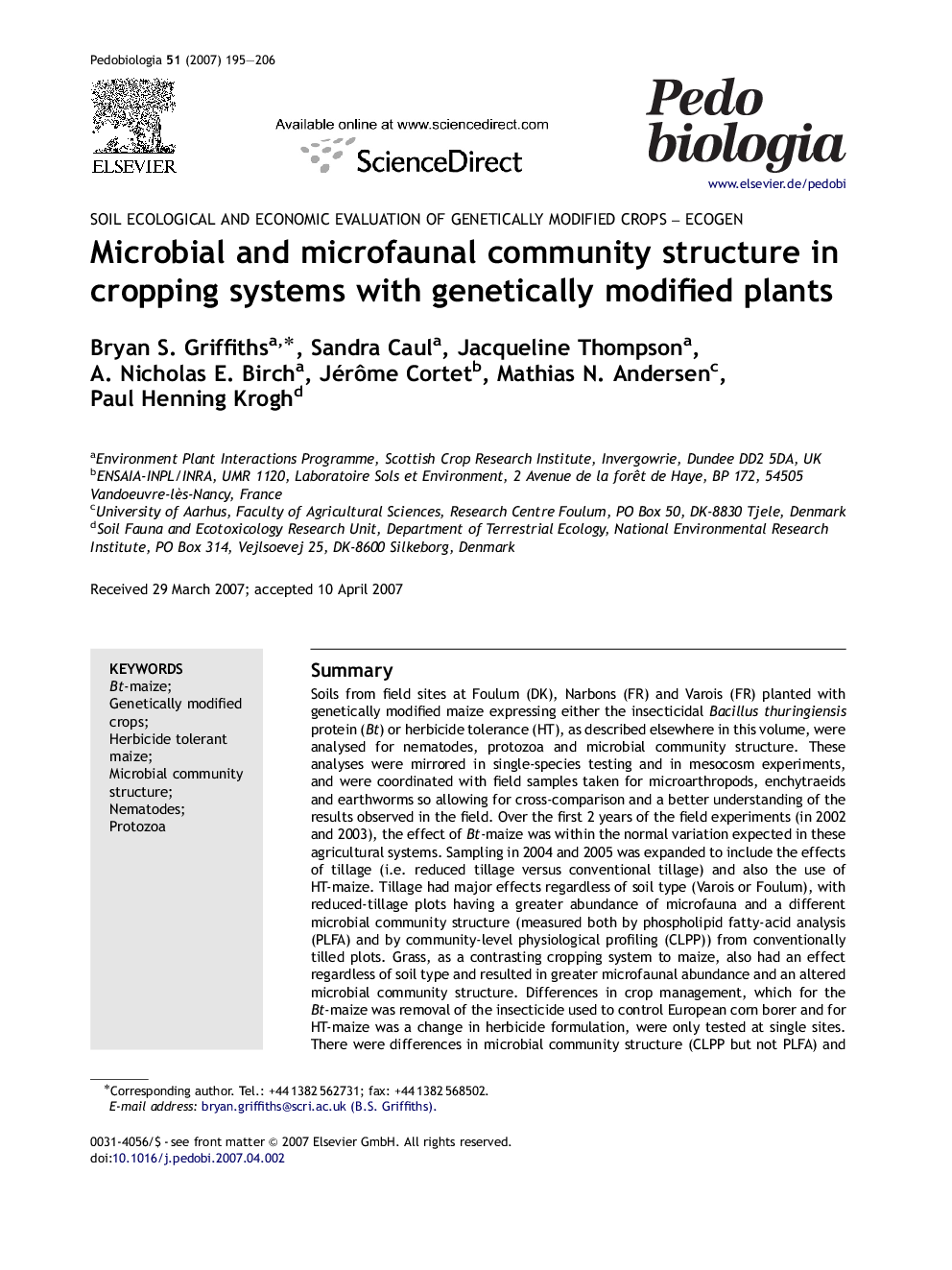| کد مقاله | کد نشریه | سال انتشار | مقاله انگلیسی | نسخه تمام متن |
|---|---|---|---|---|
| 2061543 | 1076499 | 2007 | 12 صفحه PDF | دانلود رایگان |

SummarySoils from field sites at Foulum (DK), Narbons (FR) and Varois (FR) planted with genetically modified maize expressing either the insecticidal Bacillus thuringiensis protein (Bt) or herbicide tolerance (HT), as described elsewhere in this volume, were analysed for nematodes, protozoa and microbial community structure. These analyses were mirrored in single-species testing and in mesocosm experiments, and were coordinated with field samples taken for microarthropods, enchytraeids and earthworms so allowing for cross-comparison and a better understanding of the results observed in the field. Over the first 2 years of the field experiments (in 2002 and 2003), the effect of Bt-maize was within the normal variation expected in these agricultural systems. Sampling in 2004 and 2005 was expanded to include the effects of tillage (i.e. reduced tillage versus conventional tillage) and also the use of HT-maize. Tillage had major effects regardless of soil type (Varois or Foulum), with reduced-tillage plots having a greater abundance of microfauna and a different microbial community structure (measured both by phospholipid fatty-acid analysis (PLFA) and by community-level physiological profiling (CLPP)) from conventionally tilled plots. Grass, as a contrasting cropping system to maize, also had an effect regardless of soil type and resulted in greater microfaunal abundance and an altered microbial community structure. Differences in crop management, which for the Bt-maize was removal of the insecticide used to control European corn borer and for HT-maize was a change in herbicide formulation, were only tested at single sites. There were differences in microbial community structure (CLPP but not PLFA) and sporadic increases in protozoan abundance under the Bt-crop management. The HT-maize cropping system, which covered a shorter period and only one site, showed little change from the conventional system other than an altered microbial community structure (as measured by PLFA only) at the final harvest. The Bt-trait had a minimal impact, with fewer amoebae at Foulum in May 2003, fewer nematodes at Foulum in May 2004 but more protozoa at Varois in October 2002 and an altered microbial community structure (PLFA) at Foulum in August 2005. These were not persistent effects and could not be distinguished from varietal effects. Based on the field evaluations of microfauna and microorganisms, we conclude that there were no soil ecological consequences for these communities associated with the use of Bt- or HT-maize in place of conventional varieties. Other land management options, such as tillage, crop type and pest management regime, had significantly larger effects on the biology of the soil than the type of maize grown.
Journal: Pedobiologia - Volume 51, Issue 3, 15 August 2007, Pages 195–206